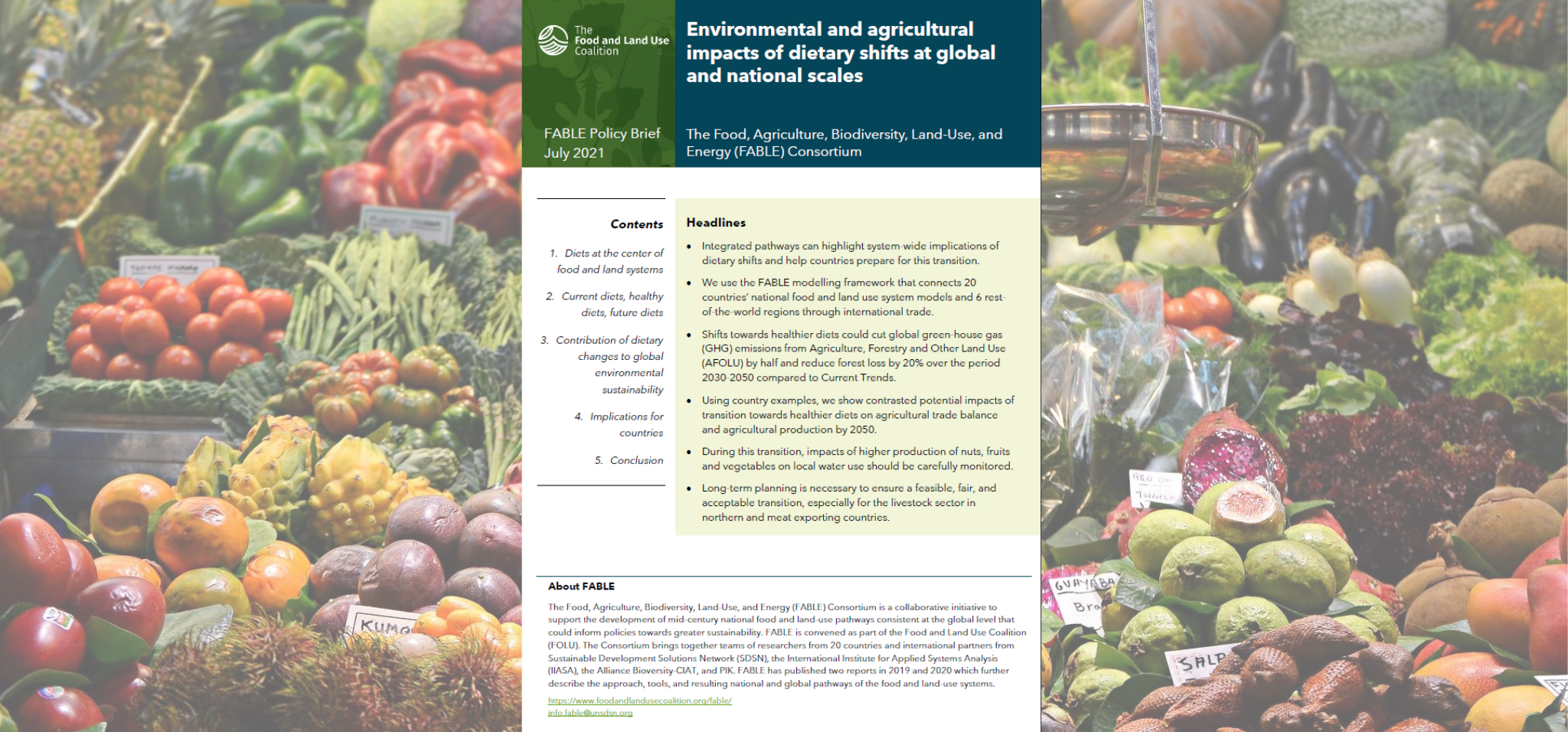
It has been long known that diets are a major determinant for human and planetary health. With the human population growing exponentially, the demands for food have created major environmental degradation. In addition, current dietary trends have led to a significant global burden of noncommunicable diseases such as cardiovascular diseases, cancers, and diabetes.
To assess the role of dietary shifts in global sustainability, this FABLE brief presents modelled dietary changes across three pathways through the FABLE national-to-global modeling framework.
- Current Trends (CT) depicts the lower boundary of feasible action towards environmental sustainability with a future based on current policy and historical trends.
- Sustainable corresponds to a high boundary of feasible action towards environmental sustainability, including the adoption of healthier diets in 15 FABLE countries and 6 rest of the world regions.
- Healthy Diets only applies the shift towards healthier diets that is assumed in the Sustainable pathway to the CT pathway.
Environmental and agricultural impacts of dietary shifts at global and national scales
This FABLE policy brief examines the implications of shifts towards healthier diets on greenhouse gas (GHG) emissions, deforestation, agricultural production, and trade, should these shifts take place.
The results of these models allowed the FABLE teams to assess the contribution of dietary changes towards the achievement of two key global sustainability targets: GHG emissions from agriculture and land-use changes compatible with the Paris Climate agreement; and zero net deforestation globally after 2030.
The results are consistent with other studies showing that a shift towards healthier diets could have a large contribution on reducing emissions from agriculture and land use change. Under the Healthy Diets pathway, GHG emissions from livestock are reduced by half and emissions from crops decrease by 25% by 2050, compared to Current Trends.
When it comes to forest loss, dietary shifts would reduce deforestation by 20% over the period 2030-2050, compared to Current Trends. Nevertheless, additional measures are needed to reach net zero forest loss by 2030.
Are dietary shifts enough to achieve greater environmental sustainability?
The shift to healthier diets can generate large benefits as outlined above, however, additional levers such as stronger regulation of forest conversion and deforestation bans, as well as active afforestation plans, can greatly improve the achievement of global environmental sustainability targets. Dietary shifts should be a central piece in a wide range of actions and should be reflected as such in global and national climate, biodiversity, and related strategies.
What does this mean for agriculture production and trade?
Analyzing these implications is especially important for countries who have higher intake of animal-sourced food and an ambition to promote a dietary shift in their population. Such shifts could require significant changes in crop rotations that might increase pressure on local water resources, especially where the production of fruits, vegetables and nuts is expected to increase, and could lead to large abandonment of agricultural land. By anticipating these changes, countries can:
- Support farmers and agrifood industries in the adjustment of the supply chain according to the changes in the demand side resulting from healthier diets,
- Implement policies and programs to ensure all socio-economic groups can access and afford healthier diets; and
- Design and implement programs to realize the carbon sink and biodiversity potential from changes in agricultural lands and ensure water use is sustainable.
By modeling these pathways and anticipating these dietary shifts, system-wide implications can be highlighted to help countries prepare for this transition. For more information please contact info.fable@unsdsn.org.